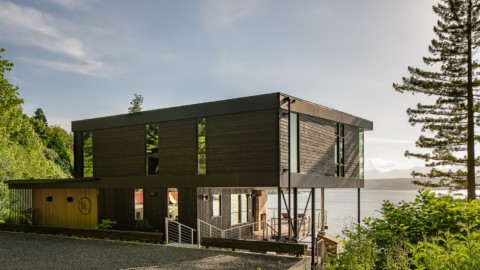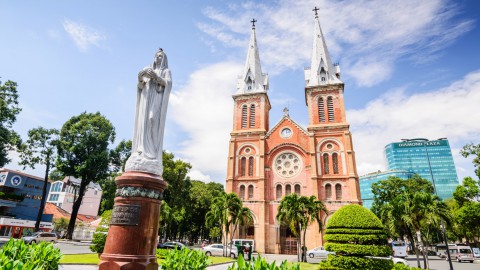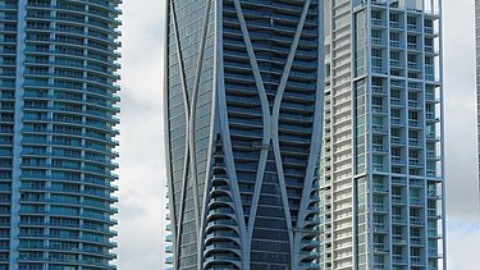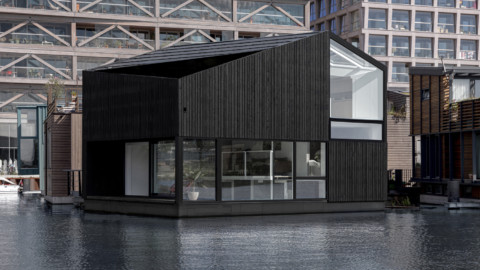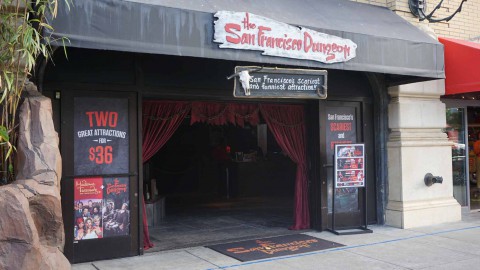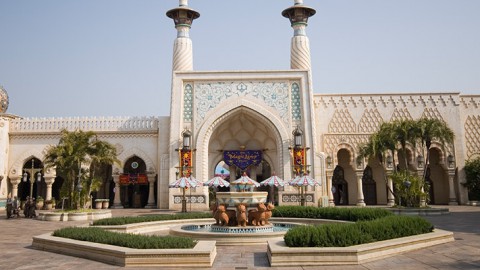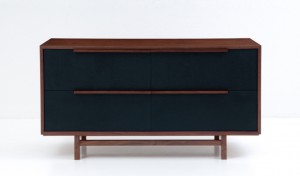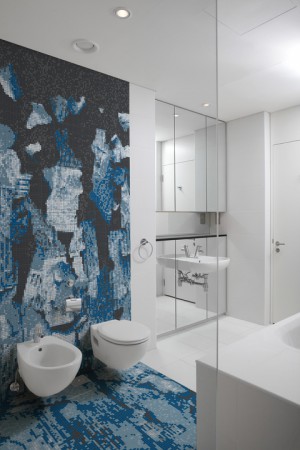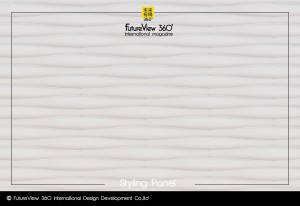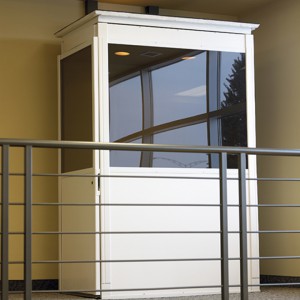Municipal Theatre, Ho Chi Minh City 胡志明市大劇院
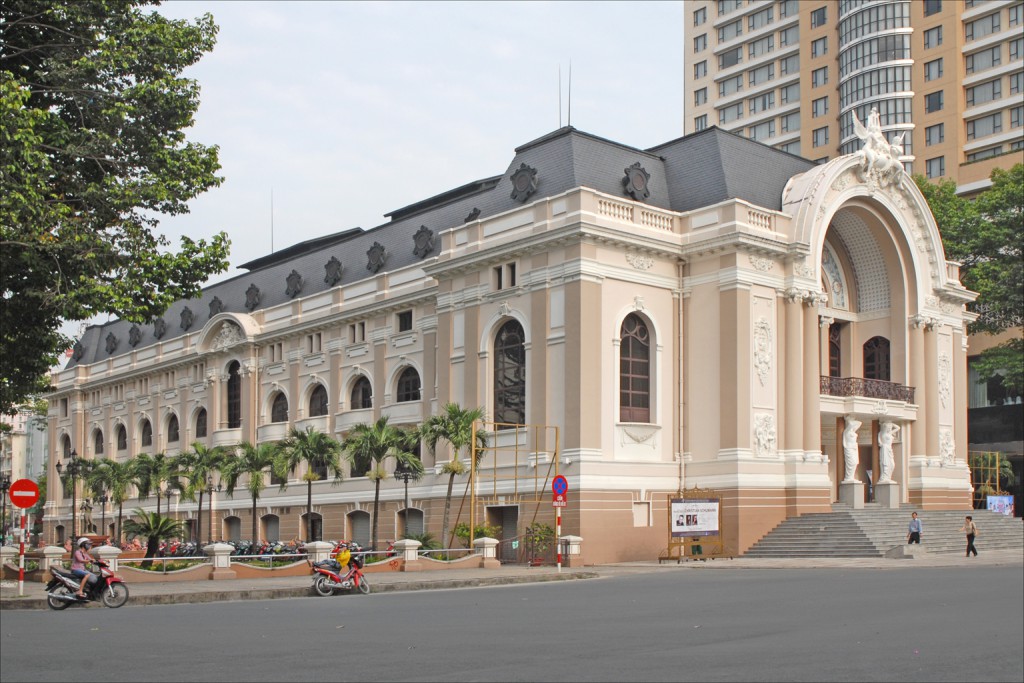
The Municipal Theatre of Ho Chi Minh City, also known as Saigon Municipal Opera House (Vietnamese: Nhà hát Thành phố Hồ Chí Minh; French: Opėra Municipal de Saigon), is an opera house in Ho Chi Minh City, Vietnam. It is an example of French Colonial architecture in Vietnam.
Built in 1897 by French architect Eugène Ferret as the Opėra de Saigon, the 500 seat building was used as the home of the Lower House assembly of South Vietnam after 1956. It was not until 1975 that it was again used as a theatre, and restored in 1995.
胡志明市市政劇院,也被稱為西貢市政歌劇院(越南語:NhàhátThànhphốHồChíMinh;法語:OpėraCityde Saigon),是越南胡志明市的歌劇院。 它是越南法國殖民建築的一個例子。
由法國建築師EugèneFerret於1897年建造的OpėradeSaigon,這座500座的建築在1956年之後被用作南越下議院大樓的所在地。直到1975年它再次被用作劇院,並恢復 在1995年。
Address:Đồng Khởi, Bến Nghé, District 1
Ho Chi Minh City
Vietnam
Coordinates:10°46′36.12″N 106°42′11.59″ECoordinates: 10°46′36.12″N 106°42′11.59″E
Type:Opera house
Capacity:500
Construction
Opened: 1 January 1900
Reopened:1975
Years active:1900-1944, 1975-Present
地址:ĐồngKhởi,BếnNghé,District 1
胡志明市
越南
坐標:10°46’36.12“N 106°42’11.59”ECoordinates:10°46’36.12“N 106°42’11.59”E
類型:歌劇院
容量:500
施工
開放時間:1900年1月1日
重新打開:1975
活躍年份:1900-1944,1975-現在
Architecture
The Municipal Theatre is a smaller counterpart of the Hanoi Opera House, which was built between 1901 and 1911, and shaped like the Opéra Garnier in Paris with 800 seats to entertain French colonists. The Municipal Theatre owes its specific characteristics to the work of architect Félix Olivier, while construction was under supervision of architects Ernest Guichard and Eugène Ferret in 1900.
Its architectural style is influenced by the flamboyant style of the French Third Republic, with the façade shaped like the Petit Palais which was built in the same year in France. The house had a main seating floor plus two levels of seating above, and once was capable of accommodating 1,800 people. The design of all the inscriptions, décor, and furnishings were drawn by a French artist and sent from France.
In accordance with the style employed, the façade of the theatre was decorated with inscription and reliefs (like the Ho Chi Minh City Hall), but it was criticized as being too ornate. In 1943 some of this decoration was removed, but a portion was restored by the city government for the 300th anniversary of Saigon in 1998. Today the capacity of the opera house is 500 seats.
建築
市政劇院是河內歌劇院的一個較小的對應物,建於1901年至1911年之間,形狀像巴黎的卡尼爾歌劇院,有800個座位可以招待法國殖民者。市政劇院的特色在於建築師FélixOlivier的工作,而建築師則由建築師Ernest Guichard和EugèneFerret於1900年監督。
其建築風格受到法國第三共和國華麗風格的影響,其外觀形狀與法國同年建造的Petit Palais相似。房子有一個主要的座位樓層和上面兩層的座位,一次可容納1,800人。所有銘文,裝飾和家具的設計均由法國藝術家繪製,並由法國發送。
根據所採用的風格,劇院的外觀裝飾有銘文和浮雕(如胡志明市政廳),但它被批評為過於華麗。 1943年,一些裝修被拆除,但一部分由市政府在1998年西貢300週年紀念日恢復。今天,歌劇院的容量為500個座位。
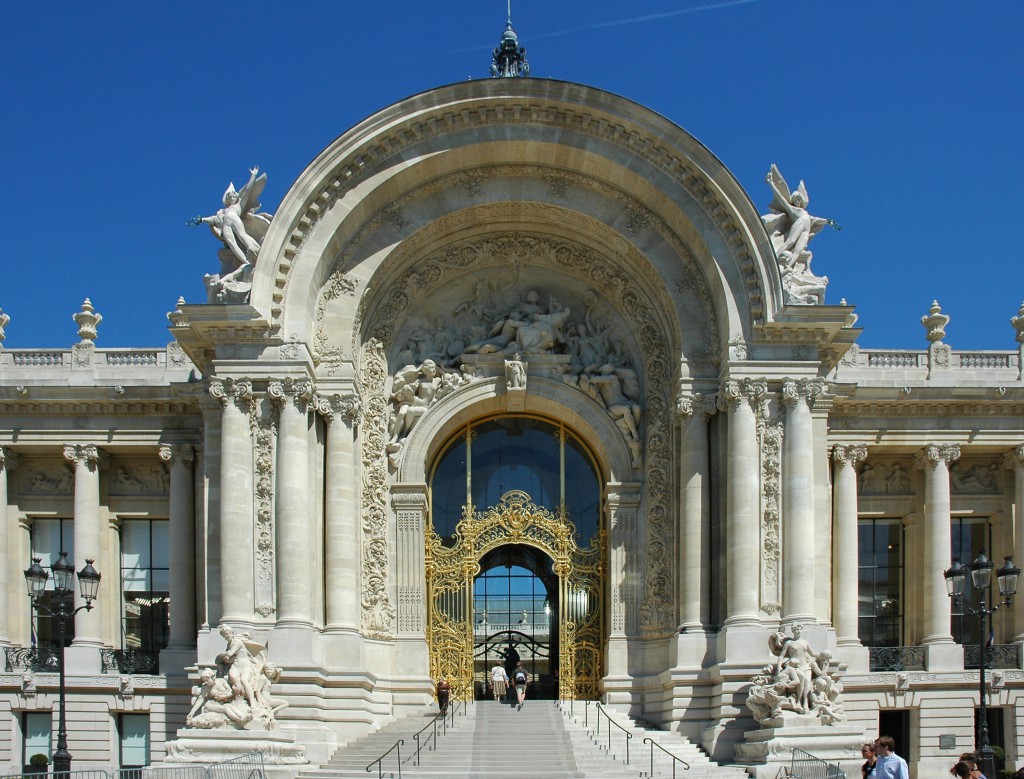
History
After the invasion of Cochinchina and the establishment of a colony, in 1863 French colonists invited a theatre company to Saigon to perform for the French legion in the villa of the French admiral at the Clock Square (Place de l’Horloge) (presently the corner of Nguyen Du and Dong Khoi streets). After a short time, a temporary theatre was built at the site of what is now the Caravelle Hotel. In 1898, the construction of the new theatre commenced on the site of the old one, and it was completed by 1 January 1900.
Between World War I and World War II, all costs of mobilization and demobilization as well as other costs for the theatre companies from France to Saigon were paid by the municipal government. Despite the fact that the theatre was planned as an entertainment venue for the growing middle class, its audience declined as more and more night clubs and dance halls boomed in the city. During this period, performances were presented only occasionally, some being concerts and others cai luong programs.
Following criticisms of the theatre’s façade and the high costs of organizing performances, the municipal government intended to turn the theatre into a concert hall (Salle de Concert), but this was never carried out. Instead, decorations, engravings and statues were removed from the theatre façade in 1943 to make the theatre look more youthful. In 1944, the theatre was damaged by the Allied aerial attacks against Japanese Imperial Army, and the theatre stopped functioning. As Japan surrendered to the Allied forces, France returned to Cochinchina. In 1954, the French army surrendered to Viet Minh during the Battle of Dien Bien Phu which led to the Geneva Accords in the same year. The theatre was then used as a temporary shelter for French civilians arriving from North Vietnam.
In 1955, the theatre was restored as the seat of the Lower House of the State of Vietnam, then the Republic of Vietnam. After the Fall of Saigon in 1975, the building was restored to its original function as a theatre. In 1998, on the occasion of 300th anniversary of the founding of Saigon, the municipal government had the theatre façade restored.
歷史
在科欽奇納入侵並建立殖民地之後,1863年,法國殖民者邀請一家劇院公司前往西貢,在時鐘廣場(Place de l’Horloge)的法國海軍上將別墅中演出法國軍團(目前在角落裡) Nguyen Du和Dong Khoi街道)。過了一會兒,在現在的Caravelle酒店的現場建了一個臨時劇院。 1898年,新劇院的建設始於舊劇院,並於1900年1月1日完工。
在第一次世界大戰和第二次世界大戰之間,市政府支付了動員和復員的所有費用以及從法國到西貢的劇院公司的其他費用。儘管劇院計劃成為不斷壯大的中產階級的娛樂場所,但隨著越來越多的夜總會和舞廳在這座城市蓬勃發展,觀眾人數逐漸減少。在此期間,只是偶爾會有表演,有些是音樂會,有些是cai luong節目。
在對劇院外觀的批評和組織演出的高昂代價之後,市政府打算將劇院變成音樂廳(Salle de Concert),但這從未實施過。相反,裝飾,雕刻和雕像於1943年從劇院外牆中移除,使劇院看起來更年輕。 1944年,劇院因盟軍對日本帝國軍的空襲而受損,劇院停止運作。隨著日本向盟軍投降,法國返回科欽奇納。 1954年,法國軍隊在Dien Bien Phu戰役期間向Viet Minh投降,並於同年簽署了“日內瓦協議”。該劇院隨後被用作從越南北部抵達的法國平民的臨時避難所。
1955年,劇院恢復為越南國家下議院的所在地,然後是越南共和國。 1975年西貢淪陷後,該建築恢復了原有的劇院功能。 1998年,在西貢成立300週年之際,市政府恢復了劇院立面。
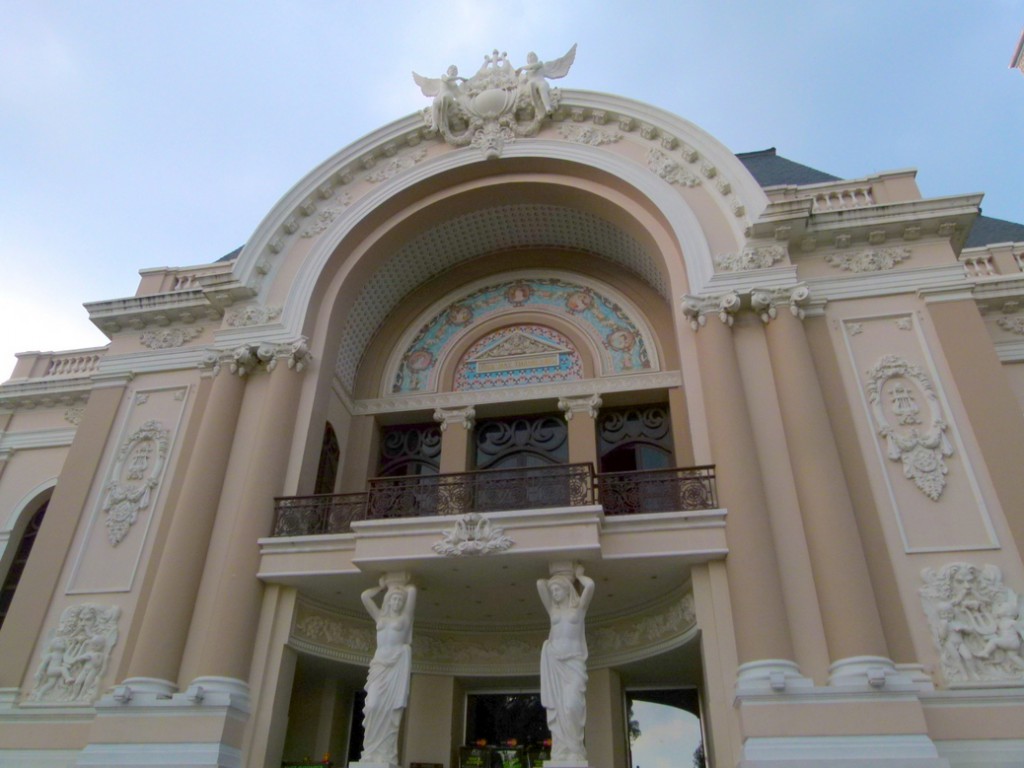
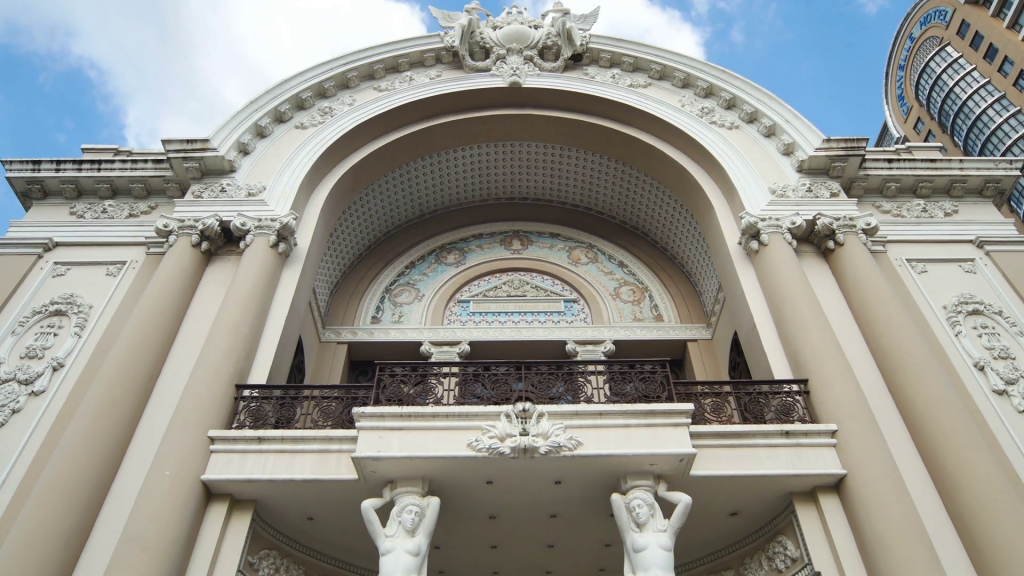
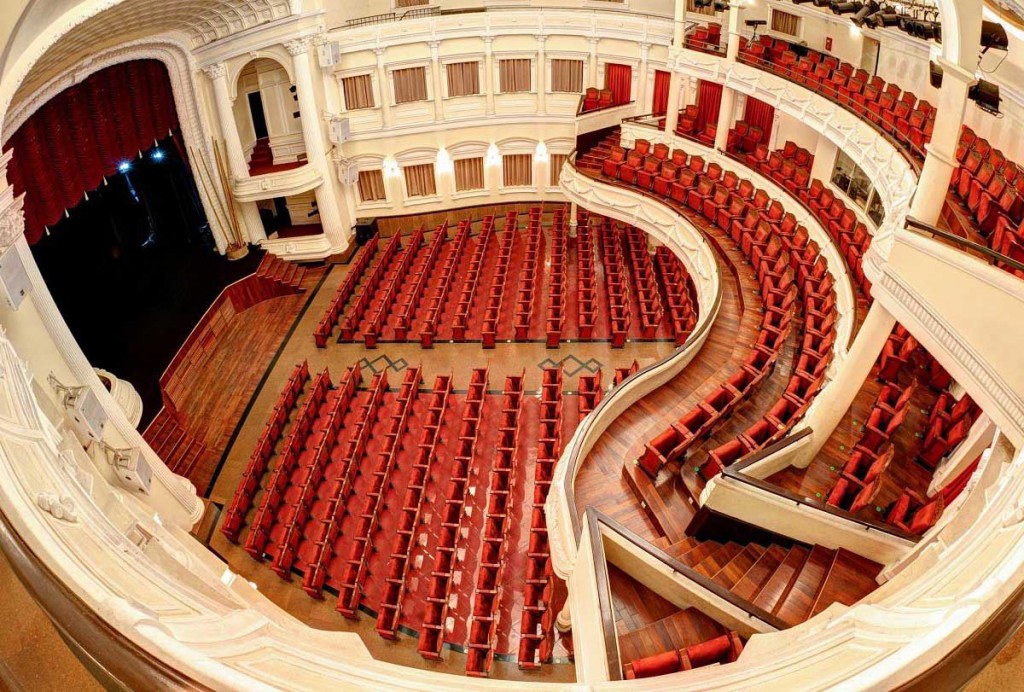
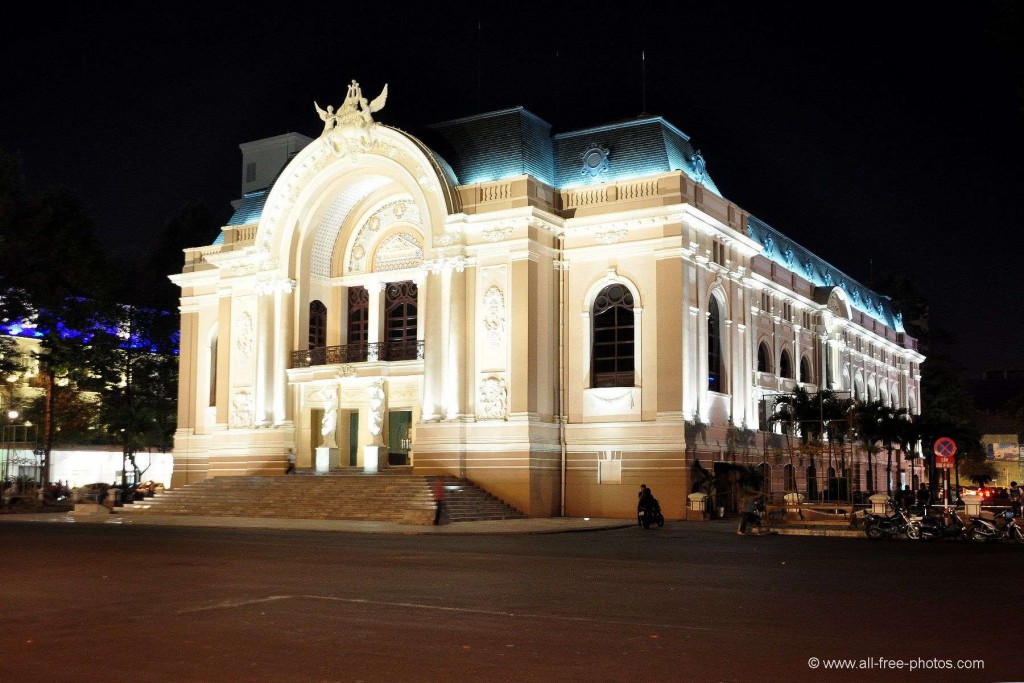
FROM:https://en.wikipedia.org/wiki/Municipal_Theatre,_Ho_Chi_Minh_City
FROM:Lego Travel to The Saigon Opera House
Don’t you think it’s addictive?
Want to know more about the beauty of architecture?
Come and join our members to explore the beauty of architectural design.
覺得看得不過癮嗎?
想要知道更多建築之美嗎?
快來加入我們的會員,一同探索建築設計之美。
The above article is purely for appreciation and sharing purposes, as well as the construction of new technology and the public can be in-depth understanding of the information at the same time there are sources, will be able to query, no use of the document as a commercial transaction, if illegal, please inform the We will immediately remove the site, thank you for cooperation.
以上文章純粹作為欣賞及分享用途,以及將建築新型技術傳遞給與大眾能夠深入了解,同時資料還有來源,將可查詢,絕無使用該文件資料作為商業交易行為,如有違法請務必告知該網站我們將立即處理撤除,謝謝合作。



